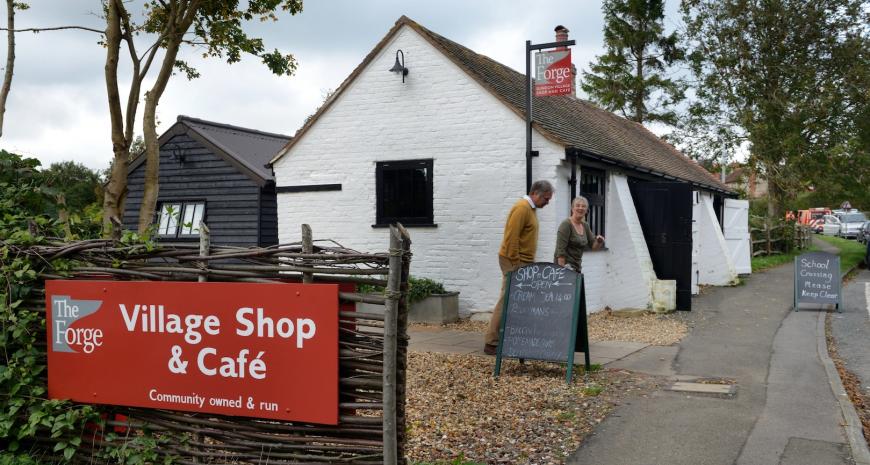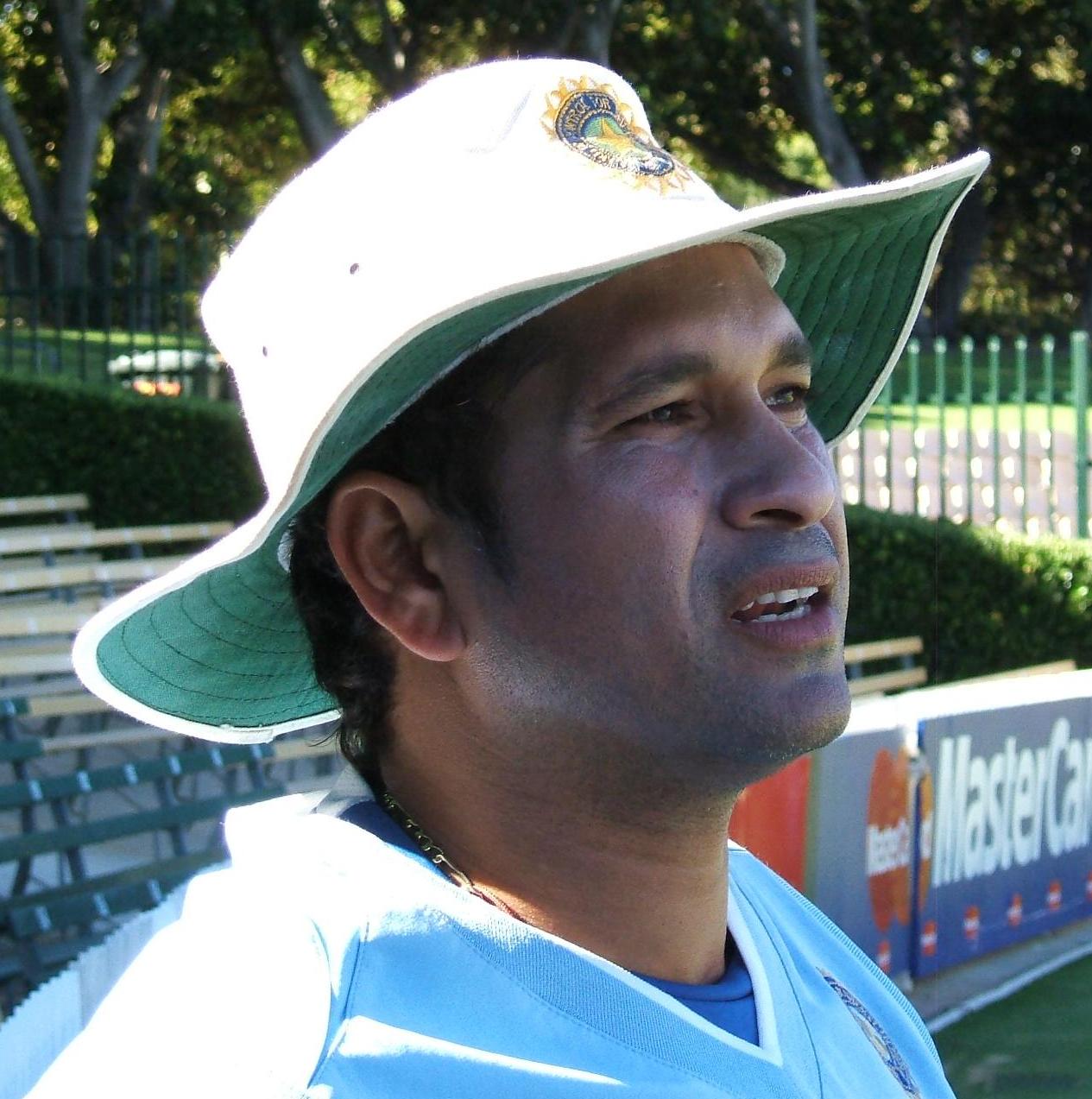|
Edward Aburrow Senior
Edward Aburrow Sr. ( – 15 April 1763), also known as Cuddy, was an English cricketer of the mid-Georgian period who played for Slindon and Sussex under the patronage of Charles Lennox, 2nd Duke of Richmond. He also represented various England teams. A resident of Slindon, Sussex, he was a contemporary of the three Newland brothers – Richard, John and Adam – who were his colleagues in the Slindon team. Outside of cricket, Aburrow Sr was a tailor in Slindon but he became involved in smuggling. He was jailed in 1745, though he turned King's evidence to gain parole. He relocated to Hambledon, Hampshire and his son Edward Aburrow Jr, also known as "Curry", became a regular Hambledon player. Aburrow Sr was an outstanding bowler who is believed to have been right-handed, but his style and pace are unknown. Like all bowlers of the time, he used an underarm action, and delivered the ball all along the ground. Although there are tentative mentions in 1742, Aburrow Sr is first de ... [...More Info...] [...Related Items...] OR: [Wikipedia] [Google] [Baidu] |
Slindon
Slindon is a mostly rural village and civil parish in the Arun District of West Sussex, England, containing a developed nucleus amid woodland. Much of Slindon's woodland belongs to the National Trust on the southern edge of the escarpment of the South Downs National Park. Slindon is centred north-east of Chichester. Within the village is situated two schools, Slindon Church of England Primary School, a state funded primary school for boys and girls aged 4-11, and Slindon College, an specialist independent day and boarding school for boys aged 8-18, which officially opened in 1972. History The village is listed in the Domesday Book of 1086 as "Eslindone", the name having the probable meaning in Old English of "sloping hill". The Domesday Book records Slindon as having 35 households, putting it in the top 20% of settlements. St Mary's 12th-century parish church contains a memorial to Stephen Langton (c1150–1228), the Archbishop of Canterbury who attended the signing ... [...More Info...] [...Related Items...] OR: [Wikipedia] [Google] [Baidu] |
Underarm Bowling
Underarm bowling is a style of bowling in cricket. The style is as old as the sport itself. Until the introduction of the roundarm style in the first half of the 19th century, bowling was performed in the same way as in the sport of bowls, with the ball being delivered with the hand below the waist. Bowls may well be an older game than cricket and it is possible that it provided a template for delivering a ball with a degree of accuracy. History For centuries, bowling in cricket was performed exactly as in the sport of bowls because the ball was rolled or skimmed along the ground. The bowlers may have used variations in pace but the basic action was essentially the same. There are surviving illustrations from the first half of the eighteenth century which depict the bowler with one knee bent forward and his bowling hand close to the ground, while the ball trundles (if slow) or skims (if quick) towards a batsman armed with a bat shaped something like a large hockey stick and ... [...More Info...] [...Related Items...] OR: [Wikipedia] [Google] [Baidu] |
1742 English Cricket Season
The 1742 English cricket season was the 46th cricket season since the earliest recorded eleven-aside match was played. Details have survived of ten significant matches, including two famous matches London and Slindon in September. Recorded matches Records have survived of ten significant matches:ACS, p.21.Other matches in England 1742 CricketArchive. Retrieved 13 January 2019. First mentions Clubs and teams *Bromley Cricket Club
Bromley Cricket Club was one of the strongest English cricket clubs in the mid-18th century when its team was led by Robert Colchin a.k.a. "Long Robin".
Earli ...
[...More Info...] [...Related Items...] OR: [Wikipedia] [Google] [Baidu] |
Goodwood House
Goodwood House is a country house and estate covering in Westhampnett, Chichester, West Sussex, England and is the seat of the Duke of Richmond. The house was built in about 1600 and is a Grade I listed building. Description The house and its grounds are the site of the annual Goodwood Festival of Speed, whilst elsewhere on the estate the Goodwood Circuit motorsport track at Chichester/Goodwood Airport hosts the annual Goodwood Revival, and the airfield has a Flying School. Goodwood Racecourse hosts "Glorious Goodwood" and a number of other (horse) race meetings. Also held on the grounds is Goodwoof, an annual celebration of dogs. The event features a variety of activities for both dogs and their owners. The estate includes two golf courses and a cricket pitch, home to Goodwood Cricket Club, a hotel and a organic farm. The estate employs over 550 people and attracts 800,000 visitors a year. The headquarters of Rolls-Royce Motor Cars is on the estate. The Monarch's Way ... [...More Info...] [...Related Items...] OR: [Wikipedia] [Google] [Baidu] |
Patronage
Patronage is the support, encouragement, privilege, or financial aid that an organization or individual bestows on another. In the history of art, art patronage refers to the support that princes, popes, and other wealthy and influential people have provided to artists such as musicians, painters, and sculptors. It can also refer to the right of bestowing offices or church benefices, the business given to a store by a regular customer, and the guardianship of saints. The word ''patron'' derives from the Latin ('patron'), one who gives benefits to his clients (see patronage in ancient Rome). In some countries, the term is used to describe political patronage or patronal politics, which is the use of state resources to reward individuals for their electoral support. Some patronage systems are legal, as in the Canadian tradition of the prime minister appointing senators and the heads of a number of commissions and agencies; in many cases, these appointments go to people who ha ... [...More Info...] [...Related Items...] OR: [Wikipedia] [Google] [Baidu] |
1744 English Cricket Season
The 1744 cricket season in England is remembered for the earliest known codification of the ''Laws of Cricket''. This was drafted by members of several cricket clubs, though the code was not published until 1755. Much of its terminology such as no ball, over (cricket), over, Toss (cricket), toss, umpire (cricket), umpire and wicket remain in current use. The season is also notable for the two earliest known surviving Scoring (cricket), match scorecards. The second of those matches, played on Monday, 18 June, was a celebrated event in which a Kent county cricket teams, Kent county team challenged an Non-international England cricket teams, England team at the Artillery Ground, Kent winning by one wicket. In September, Slindon Cricket Club defeated London Cricket Club and then issued a challenge to play "any parish in England". The challenge was accepted by the Addington Cricket Club, Addington and Bromley Cricket Club, Bromley clubs, but there is no record of either challenge ... [...More Info...] [...Related Items...] OR: [Wikipedia] [Google] [Baidu] |
Pitched Delivery Bowling
In cricket in the early 1760s, there was an evolutionary transition from the sport's "pioneering phase" to its "pre-modern phase" when bowling (cricket), bowlers began to bowl pitched deliveries by pitching the cricket ball, ball towards the wicket instead of rolling or skimming it along the ground as they had previously done. The essential bowling action was still underarm bowling, underarm but the introduction of a ball travelling through the air coupled with a bounce was a key point of evolution in the sport's history, especially as it was the catalyst for the invention of the straight cricket bat, bat, which replaced the old "hockey stick" design. It was the first of three keypoint evolutions in bowling: the others were the introduction of the roundarm bowling, roundarm style in the 1820s and overarm bowling, overarm in the 1860s. John Nyren's evidence In John Nyren's ''Memoranda'' (1832), he wrote the following account of the Non-international England cricket teams, England v ... [...More Info...] [...Related Items...] OR: [Wikipedia] [Google] [Baidu] |
Bowler (cricket)
Bowling, in cricket, is the action of throwing, propelling the cricket ball, ball toward the wicket defended by a batter. A player skilled at bowling is called a ''bowler''; a bowler who is also a competent :Batting (cricket), batter is known as an all-rounder. Bowling the ball is distinguished from throwing (cricket), ''throwing'' the ball by a strictly specified biomechanical definition, which restricts the angle of extension of the elbow. A single act of bowling the ball towards the batter is called a ''ball'' or a ''delivery (cricket), delivery''. Bowlers bowl deliveries in sets of six, called an ''over (cricket), over''. Once a bowler has bowled an over, a teammate will bowl an over from the other end of the pitch. The Laws of Cricket govern how a ball must be bowled. If a ball is bowled illegally, an umpire (cricket), umpire will rule it a ''no-ball''. If a ball is bowled too wide of the striker for the batter to be able to play at it with a proper cricket shot, the bowler' ... [...More Info...] [...Related Items...] OR: [Wikipedia] [Google] [Baidu] |
Hockey Stick
A hockey stick is a piece of sports equipment used by the players in all the forms of hockey to move the ball or puck (as appropriate to the type of hockey) either to push, pull, hit, strike, flick, steer, launch or stop the ball/Hockey puck, puck during play with the objective being to move the ball/puck around the playing area using the stick, and then trying to score. The word "stick" is a generic term for the equipment since different types of hockey require different forms and sizes to be effective. Field/ice/roller hockey all have a visually similar form of stick with a long shaft or handle which can be held with two hands, and a curved and flattened end; the end and curvature of these sticks are generally the most visible differences between the sticks for these sports. A modern underwater hockey stick bears little resemblance to any field/ice/roller hockey stick, since it is much smaller to enable it to be used exclusively in one hand, and it also has to be produced in one ... [...More Info...] [...Related Items...] OR: [Wikipedia] [Google] [Baidu] |
Cricket Bat
A cricket bat is a specialised piece of equipment used by batters in the sport of cricket to hit the ball, typically consisting of a cane handle attached to a flat-fronted willow-wood blade. It may also be used by a batter who is making batter's ground to avoid a run out, by holding the bat and touching the ground with it. The length of the bat may be no more than 38 inches (96.5 cm) and the width no more than 4.25 inches (10.8 cm). Its use is first mentioned in 1624. Since 1979, a law change has dictated that cricket bats can only be made from wood. Construction The ''blade'' of a cricket bat is a wooden block that is generally flat on the striking face and with a ridge on the reverse (back) which concentrates wood in the middle where the ball is generally hit. The bat is traditionally made from willow wood, specifically from a variety of white willow called cricket bat willow (''Salix alba'' var. ''caerulea''), treated with raw (unboiled) linseed oil, which has a protectiv ... [...More Info...] [...Related Items...] OR: [Wikipedia] [Google] [Baidu] |
Batting (cricket)
In cricket, batting is the act or skill of hitting the cricket ball, ball with a cricket bat, bat to score runs (cricket), runs and prevent the dismissal (cricket), loss of one's wicket. Any player who is currently batting is, since September 2021, officially referred to as a batter regardless of whether batting is their particular area of expertise. Historically, ''batsman'' and ''batswoman'' were used, and these terms remain in widespread use. Batters have to adapt to various conditions when playing on different cricket pitches, especially in different countries; therefore, as well as having outstanding physical batting skills, top-level batters will have quick reflexes, excellent decision-making skills, and be good strategists. During an innings two members of the batting side are on the pitch at any time: the one facing the current delivery from the bowler is called the striker, while the other is the non-striker. When a batter is dismissal (cricket), out, they are replac ... [...More Info...] [...Related Items...] OR: [Wikipedia] [Google] [Baidu] |
Wicket
In the sport of cricket, the term wicket has several meanings: * It is either of the two sets of three Stump (cricket), stumps and two Bail (cricket), bails at each end of the Cricket pitch, pitch. The Fielding (cricket), fielding team's players can hit the wicket with the ball in a number of ways to get a batter out (cricket), out. ** The wicket is guarded by a Batsman (cricket), batter who, with their cricket bat, bat (and sometimes with their pads, but see the laws on Leg before wicket, LBW, leg before wicket), attempts to prevent the Cricket ball, ball from hitting the wicket (if it does, he may be bowled out) and to Run (cricket), score runs where possible. * Through metonymic usage, the Dismissal (cricket), dismissal of a batter is known as the ''taking of a wicket'', * The cricket pitch itself is sometimes referred to as ''the wicket''. History The origin of the word is from wicket gate, a small gate. Originally, cricket wickets had only two stumps and one bail and lo ... [...More Info...] [...Related Items...] OR: [Wikipedia] [Google] [Baidu] |








